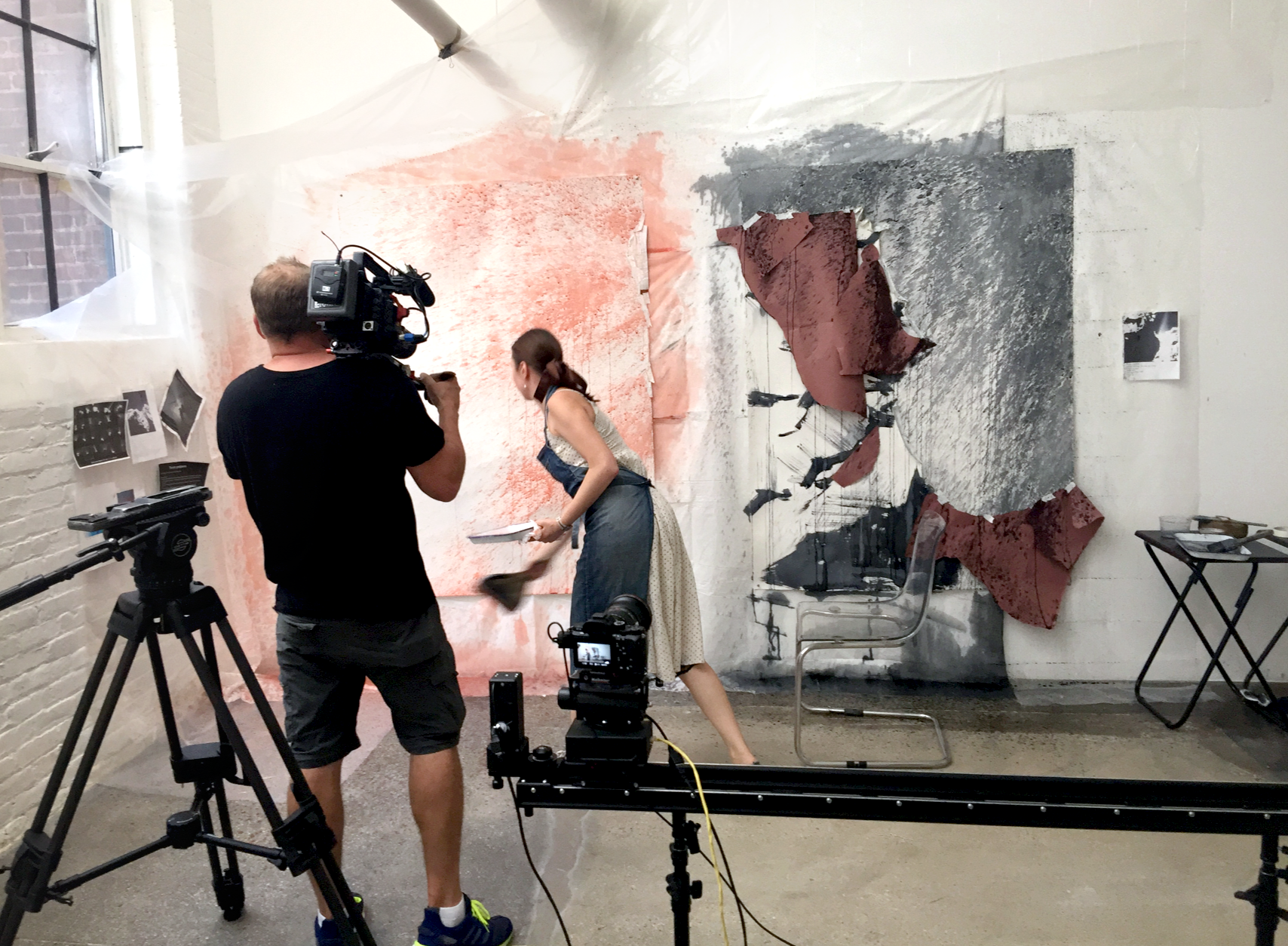During my stay at Tenjinyama art studios in Sapporo (Jan 2017) I was doing research of snow. The goal is to present the fragility of snow due to the rising temperatures globally. At this show I am displaying a series of works on paper that were created with snow.
My viewers are invited to download a free app Blippar and experience augmented reality (AR), though which paintings come to live. Each of these pieces was recorded during it's creation over a period of few hours (up to a whole day), during which the snow was melting on paper and leaving patterns as the water dried. I am creating a utopian experience imagining a future where you will no longer be able to see snow in person and will only be able to experience it via recordings, videos and photographs.
For my creations I chose different types of snow. Dirty snow from the roads made the ugliest mark on paper leaving behind all of the dirt, that it originally absorbed. Because of the overuse of salt in the cities in winter even the snow carries large amounts of salt, large enough to leave behind crystallized salt patterns which are presented on the picture below.
Varies sound recordings associated with snow and ice are accompany each artworks as well.
Try Augmented Reality now:
1. download Blippar app on your smart device
2. turn of sound
3. point of any of the artworks below wait for the system to recognize the image
Note:
you can flip your phone vertical or horizontal. To see the next image close the previous (x)
Try AR on this image
Try AR on this image
Try AR on this image
I am continuing my research on this subject. So please stay tuned, there is more work to come.










































